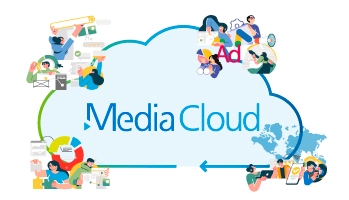The path to Diversification I - Why?

It is a fact that those operating in the media sector are striving to make a profit in the digital world. We feel the wind of change, the need for transformation. There is much talk in all types of forums about new business models, but in fact there are few media companies that have really tried to explore new paths. And one of these paths is that of diversification. Let me explain.
In our sector, globalisation driven by technology has lead to a radical transformation of the business landscape. The limits existing between many economic activities have disappeared. And this affects the two main pillars of our business: the audience and advertising.
Look at our advertisers, who our finding alternative ways to promote their brands and products; at times, they slip through our fingers. The supermarket sells its products online; the car manufacturer projects its image on social networks and Internet with audiovisual formats designed specifically for these channels; real estate agencies place their ads on specialist websites, and so on. There are many examples but only one conclusion: the advertiser no longer depends exclusively on traditional advertising to make himself known; his possibilities of reaching a wider audience have multiplied, while his budget for expenditure on advertising has, in many cases, remained the same.
And if we look at the audience, at those who we would like to pay attention to us, we now see that they have at their fingertips an enormous amount of information that, largely, they have become used to consuming free of charge and which, moreover, does not always come from traditional media. In addition, many of their previous points of attraction towards our product - such as the “what’s on” section, the classified ads and other social services - have increasingly become less important, even to the point of disappearing altogether because they are now available online or through a WhatsApp sent by a friend. Another essential factor - our credibility - is being diminished, partly due to mistaken strategies of “one-sided journalism” but also because hyper-information and limited reading habits make it difficult to distinguish - particularly for younger readers - quantity from quality; a good source, from mere noise or rumour.
This type of “horizontal transversality” favoured by technology has shaken up the role of opinion leaders -what I personally like to call setting the social benchmark - which newspapers used to have carried out and, fortunately, still do have in many cases. The danger is real. From being a focal point, a vital part of the day-to-day lives of individuals and the community, newspapers could find themselves reduced to mere bit parts, supplementary and dispensable.
Given this situation, what is to be done? WE MUST ADAPT! With imagination and courage, which are not the same things as madness and irresponsibility. The path to DIVERSIFICATION which, in my opinion, these new realities make advisable arises from the need not to lose this role as opinion leader in the community which the newspaper has been able to create over time. If we stop being vital, necessary, in creating the social framework what sort of future will we have?
That’s why it is time to wake up, to develop serious corporate strategies in the short, medium and long term in response to the basic question - Why have people bought-read me until now? This analysis will identify our strong points with a view to designing a diversification plan regarding our activity. Why resign oneself to a gradual process of reduced social importance? If the points of impact and attraction that affect our readers and advertisers have increased, why not also multiply ourselves the ways in which we are present in their lives, in their commercial activity?
According to some people, the problem is how to do this; how to change the structure of my company; how to make my staff understand this change, in order to open their minds and encourage creativity and global vision. In truth, this is no easy task. But it has to be done - and in a profitable manner. Waiting to see what others are doing, sitting on the fence - this is not being prudent, it is more like professional suicide.
Since I don’t want to aid this suicide, I hope to make some observations and put forward some ideas in a forthcoming blog...




